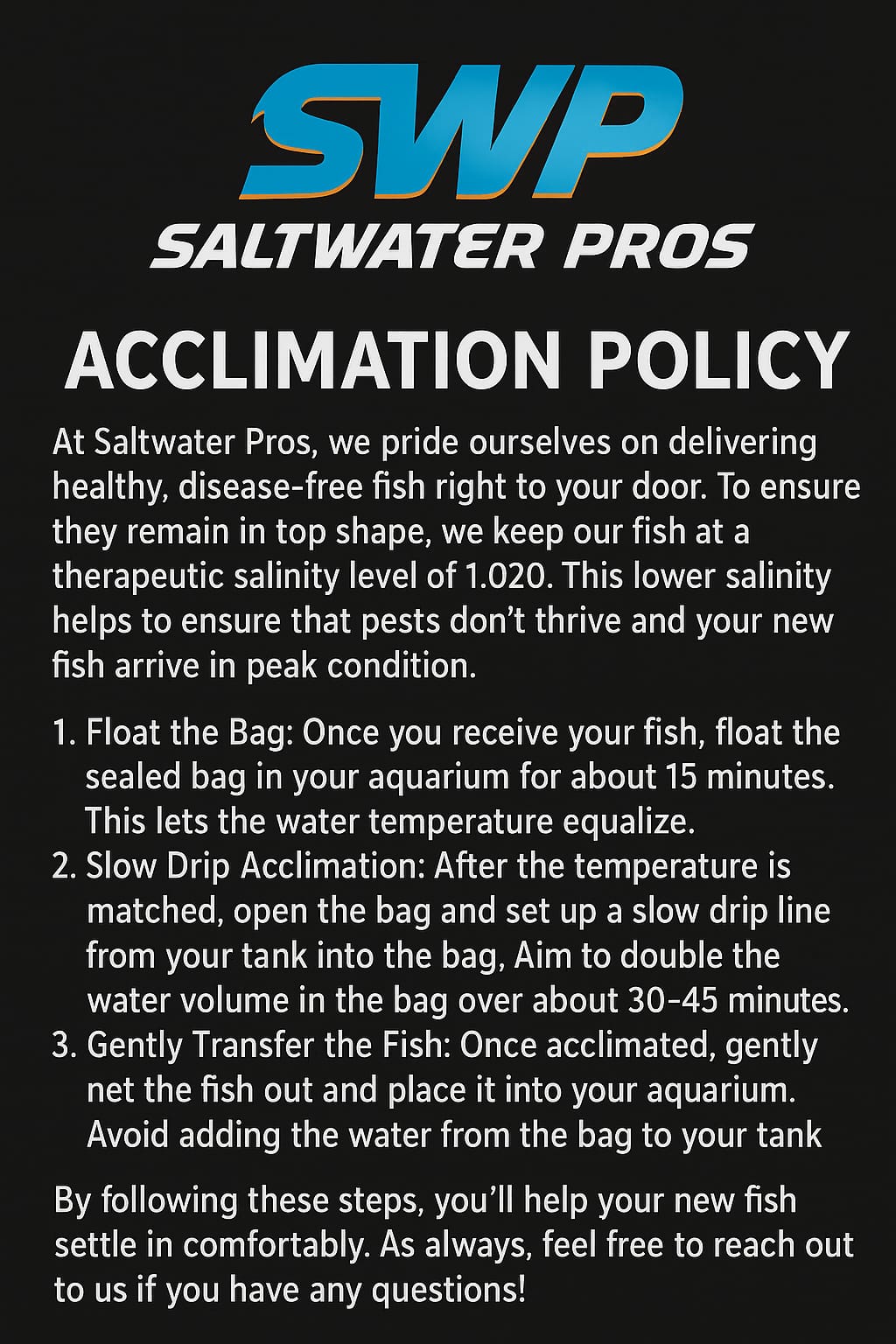Description
Diadema setosum – Black Long Spine Urchin
🔹 Quick Facts
-
Scientific Name: Diadema setosum
-
Common Name: Black Long Spine Urchin
-
Family: Diadematidae
-
Origin: Indo-Pacific, including Red Sea, Indian Ocean, and Western Pacific reefs
-
Reef Safe: ✔ Yes (with caution – may knock over corals)
🔹 Identification
-
Jet black, rounded body with needle-like spines that can reach up to 30 cm (12 inches) in length.
-
Often displays five distinctive white dots around the central body.
-
Has a bright blue or orange ring around the anus – a unique identifying feature compared to other urchin species.
-
At night, tube feet and pedicellariae (tiny claw-like structures) can be seen moving actively.
🔹 Behavior
-
Nocturnal grazer – hides in crevices during the day and comes out at night to feed.
-
Moves slowly but is very effective at clearing algae.
-
Uses its long spines as defense against predators – fish generally avoid them.
-
Can accidentally dislodge rocks and corals when climbing.
🔹 Diet
-
Primary diet: microalgae and filamentous algae.
-
Will graze on coralline algae (sometimes frustrating for reef keepers).
-
If natural algae is lacking, it should be fed dried nori, spirulina, or herbivore pellets.
-
A well-fed urchin = better algae control + longer survival in the reef tank.
🔹 Tank Requirements
-
Tank Size: 75 gallons minimum (needs plenty of rock and grazing space).
-
Lighting: Not picky – thrives in reef lighting.
-
Water Parameters:
-
Temperature: 72–78°F
-
Salinity: 1.023–1.025
-
pH: 8.1–8.4
-
Nitrates: <10 ppm
-
Phosphates: <0.1 ppm
-
-
Needs a mature aquarium with stable water and plenty of natural algae.
🔹 Reef Compatibility
-
✔ Safe with corals (does not eat them)
-
✔ Safe with fish (most avoid the spines)
-
❌ Not safe with predators like triggers, puffers, or large wrasses (they may try to bite it)
🔹 Benefits
-
Excellent algae control for reef aquariums.
-
Adds unique, exotic movement and appearance to the tank.
-
Natural part of the reef ecosystem – creates balance.









